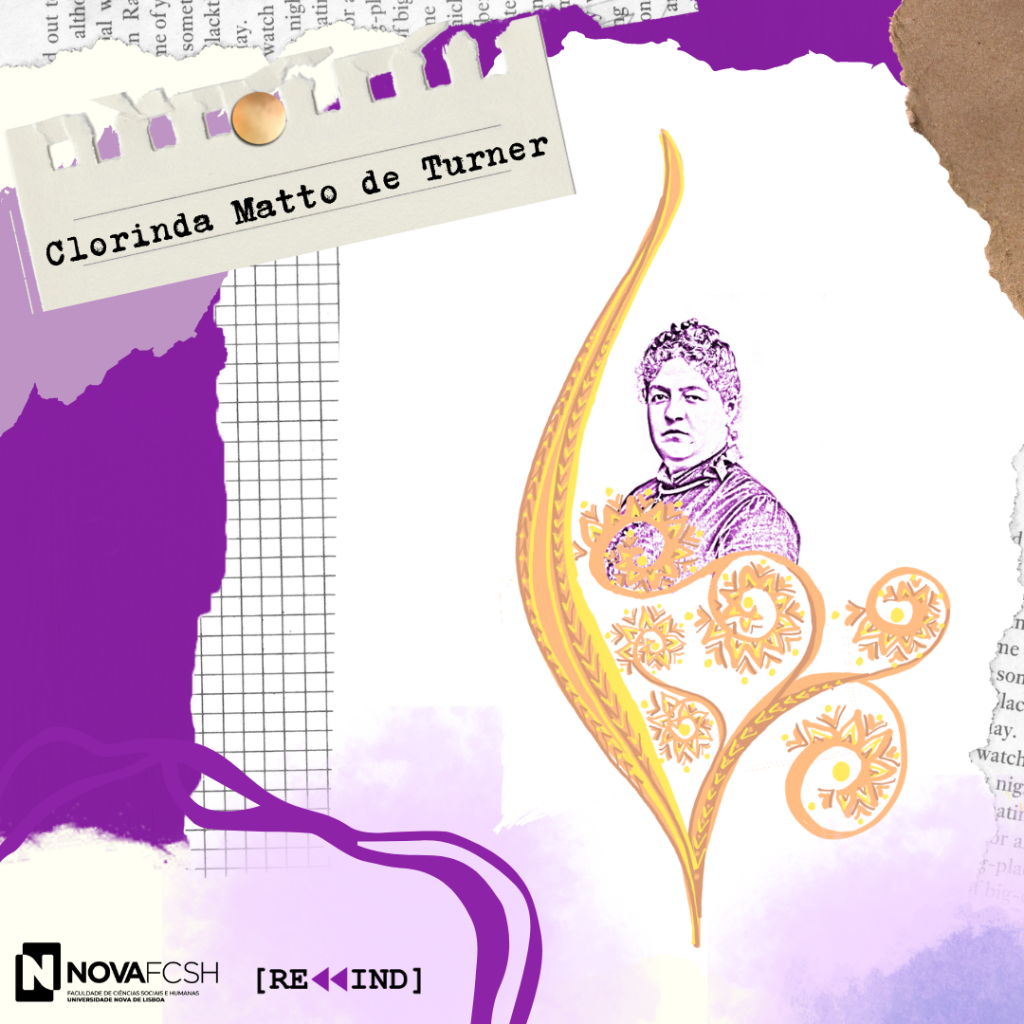
Grimanesa Martina Mato Usandivares (Cuzco, 11/11/1852 – Buenos Aires, 25/11/1909, known as Clorinda Matto de Turner), was a writer who had a great impact on the society of her time, since, through her literature, she reflected with a critical perspective on the political reality she lived through, claimed the rights of the indigenous population and analysed the different European cultures and their relationship with the countries of Ibero-America. In addition, Matto de Turner’s narrative reveals her great concern and commitment to the emancipation and education of women. In this sense, her life was not exempt from controversy, and her biography is marked by exile and excommunication.
She contributed to numerous regional and international newspapers and magazines, such as Álbum Ibero-Americano, El Ferrocarril, El Heraldo de Cuzco, El Mercurio, El Correo de Ultramar, La Alborada del Plata, La Ilustración, La Nación, La Prensa, La Razón and El Tiempo, among others. In addition, in 1876 he founded the newspaper El Recreo. A few years later, between 1884 and 1885, she became editor-in-chief of the newspaper La Bolsa. And from 1889 to 1991 she edited the magazine El Perú Ilustrado. In 1892 she co-founded “La Equitativa”, a printing press in Lima where only women worked and where the biweekly Los Andes began to be published a year later.
In 1895, she went into exile in Buenos Aires, where she worked as a journalist, founded the magazine Búcaro Americano and taught at the Escuela Normal de Maestras, as well as at the Escuela Comercial de Mujeres. In addition, she was the first woman to join the Buenos Aires Athenaeum and also participated in the National Council of Women of Argentina.
Matto de Turner’s literary production is wide and varied. Although most of her publications are journalistic, she also wrote essays and plays. Her literary works include Aves sin nido (1889), Índole (1891) and Herencia (1893).
She was part of a circle of female writers, including Juana Manuela Gorriti and Aurora Zoila Cáceres. On her trip to Europe in 1908 to study women’s educational systems, she met renowned feminists such as Carmen Burgos, Concepción Jimeno de Flaquer, Fran Minna Caner and Matilde Serao. The memoirs of this European journey were recorded in:
Clorinda Matto de Turner: Viaje de recreo: España, Francia, Inglaterra, Italia, Suiza, Alemania (Valencia: F. Sempere, 1909).
This text is analysed in REWIND to discover the author’s impressions of European cultural heritage.
Here are some bibliographical references in case you would like to learn more about Clorinda Matto de Turner:
- Arango-Keith, Fanny (2002): “Del ángel del hogar a la obrera del pensamiento. Construcción de la identidad socio-histórica y literaria de la escritora peruana del siglo diecinueve”. In Juan Andreo García & Sara Beatriz Guardia (eds.), Historia de las mujeres en América Latina (Murcia: Universidad de Murcia): 377-396.
- Berg, Mary G. (1997): “Clorinda Matto de Turner: periodista y crítica (Perú, 1852-1909)”. In Betty Osorio & María Mercedes Jaramillo (eds.), Las desobedientes. Mujeres de nuestra América (Bogotá: Panamericana Editorial): 147-159.
- Berg, Mary G. (2000): “Presencia y ausencia de Clorinda Matto de Turner en el panorama literario peruano”. In Ignacio Arellano & José Antonio Mazotti (eds.), Edición e interpretación de textos andinos (Madrid: Iberoamericana): 211-229.
- Martínez Hoyos, Francisco (2010-2011): “El exilio de Clorinda Matto de Turner”. Cuadernos Kóre 1(3): 52-61.
- Meléndez, Mariselle (2015): “Geografías de conocimiento: viaje y diálogos transoceánicos en la ensayística de Clorinda Matto de Turner sobre el pasado colonial”. In Pura Fernández (ed.), No hay nación para este sexo: la Re(d)pública transatlántica de las Letras. Escritoras españolas y latinoamericanas (Frankfurt – Madrid: Vervuert Verlagsgesellschaft): 247-264.
- Miseres, Vanesa (2011): “Discurso crítico e imaginario de Europa en el Viaje de recreo (1909) de Clorinda Matto de Turner”. In Sara Beatriz Guardia (ed.), Viajeras entre dos mundos (Dourados: DEHMAL): 373-389.
- Miseres, Vanesa (2013): “Modelos de viajera: Clorina Matto de Turner y su Viaje de recreo”, Chasqui: Revista de Literatura Latinoamericana 42 (2): 110-124.
- Ortiz Fernández, Carolina (2018): “El Recreo, tribuna pública de mujeres pioneras en la educación y el periodismo en el Perú del siglo XIX”, Letras 89 (130): 100-122.
- Peluffo, Ana (2005): Lágrimas andinas: Sentimentalismo, género y virtud republicana en Clorinda Matto de Turner (Pittsburgh: Instituto Internacional de Literatura Iberoamericana).
- Portugal, Ana María (1999): “El periodismo militante de Clorinda Matto de Turner”. En Margarita Zegarra (ed.), Mujeres y género en la historia del Perú. (Lima: CENDOC): 319–330.
- Vicens, María (2015): “Entre las vacaciones y el trabajo: sociabilidad y profesionalización en Viaje de recreo de Clorinda Matto de Turner”, Decimonónicas 12(2): 82-102.
- Ward, Thomas (2007): “Ficción histórica peruana: Las escritoras comprometidas”, Labrys: études féministes/estudios feministas 11 “Femenismos en el Perú” (janvier/juin 2007-janeiro/junho 2007).
- Ward, Thomas (2009): “Feminismo liberal vs. anarquismo radical: Obreras y obreros en Matto de Turner y González Prada, 1904-05”, A Contracorriente 7 (1): 188-210.
- Zanetti, Susana (1994): “Búcaro Americano, Clorinda Matto de Turner en la escena femenina porteña”. In Lea Fletcher (ed.), Mujeres y cultura en la Argentina del siglo XIX (Buenos Aires: Feminaria): 264-275
